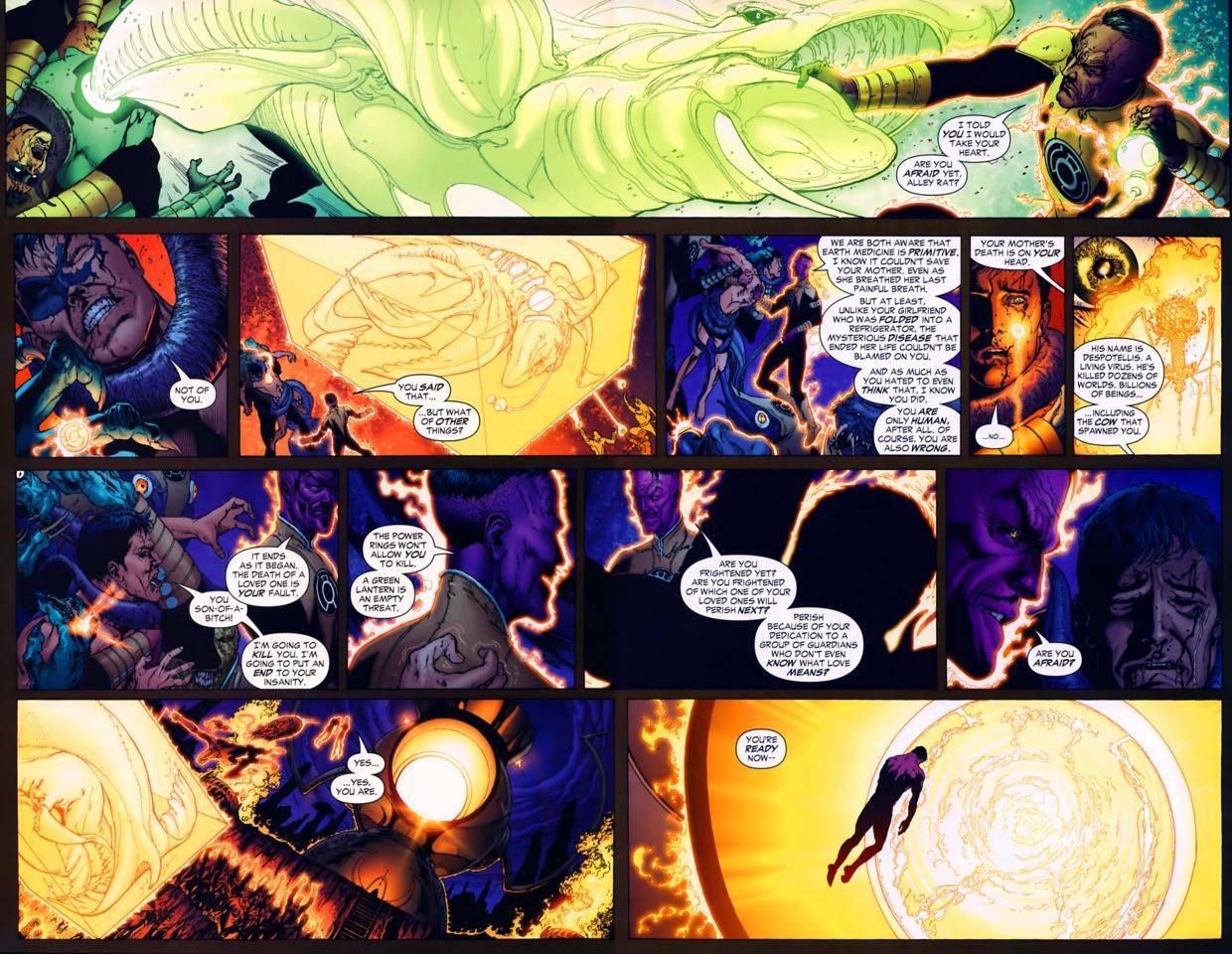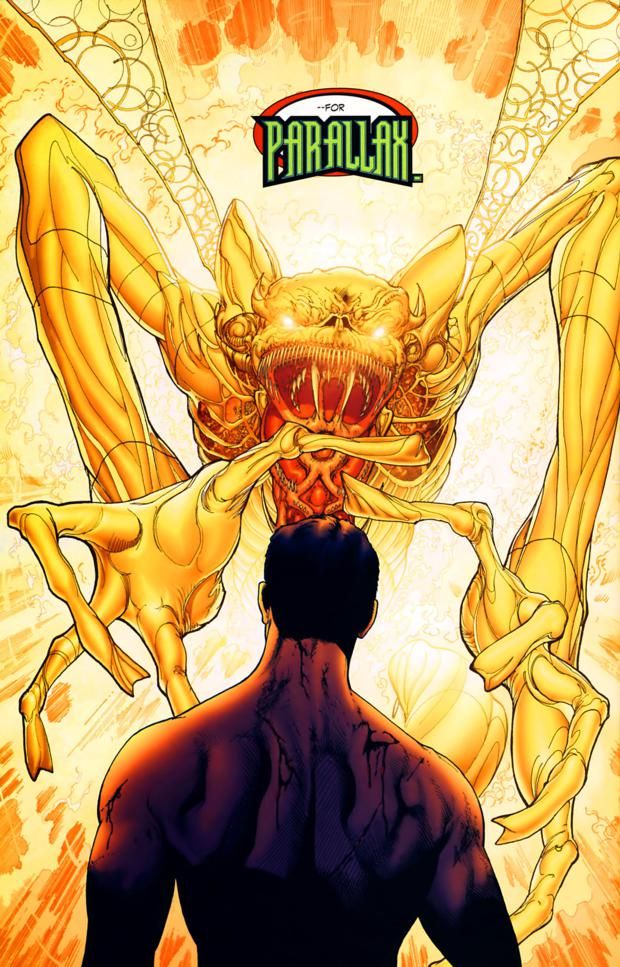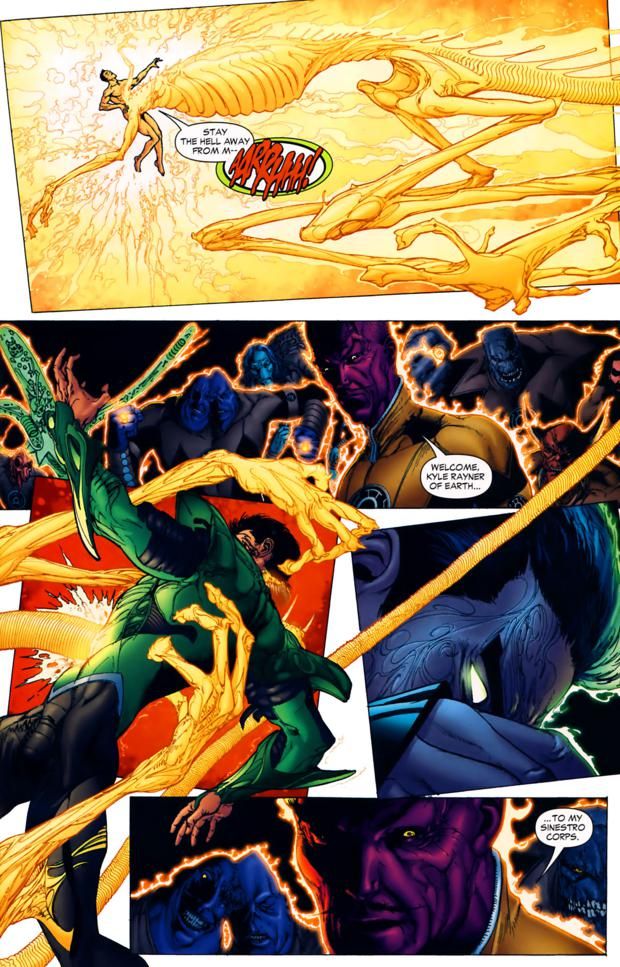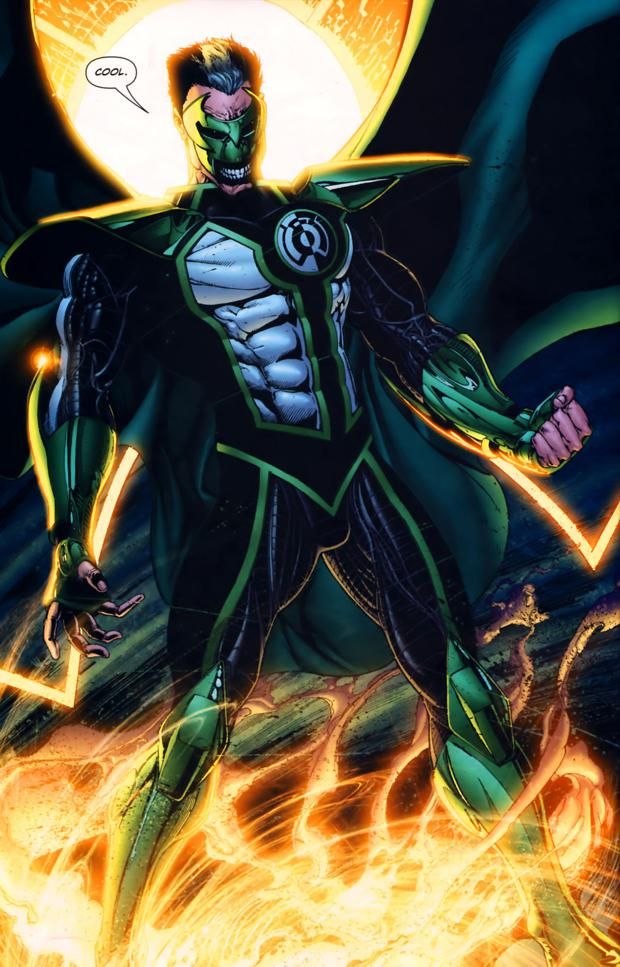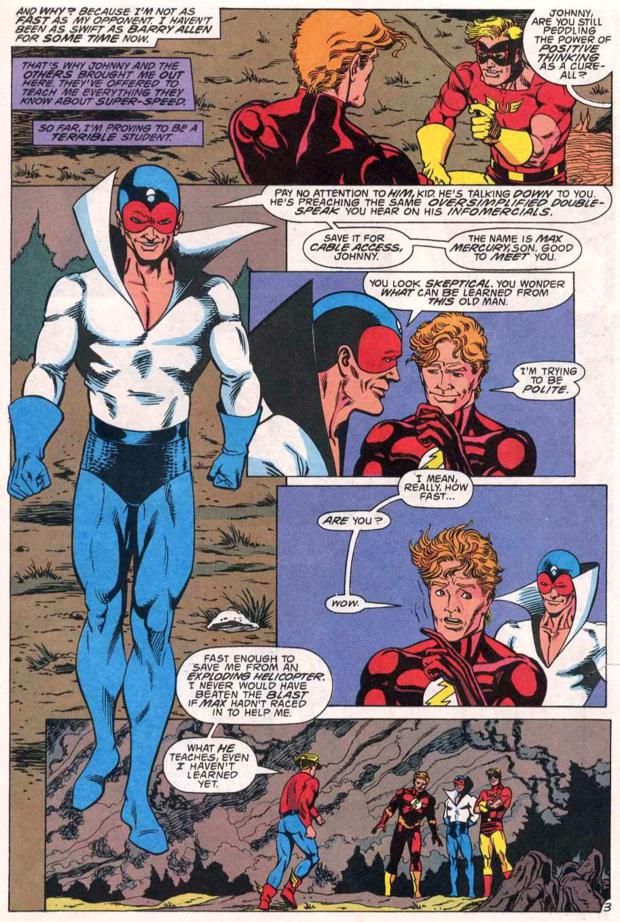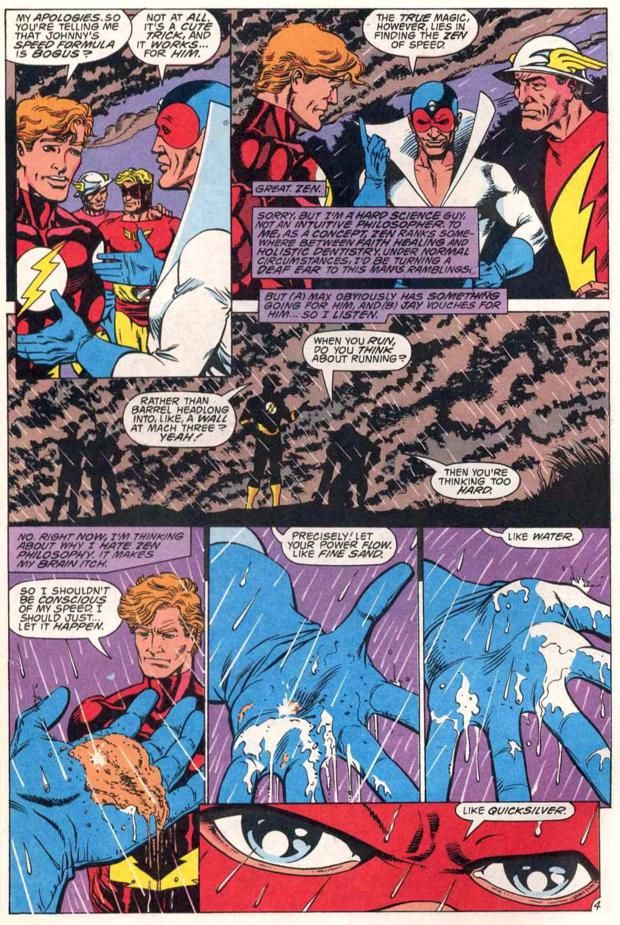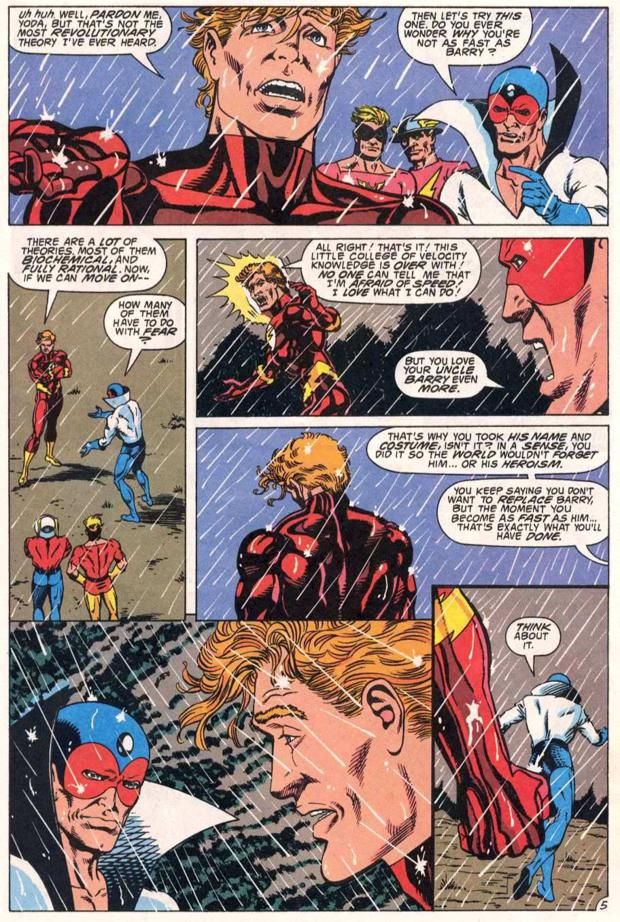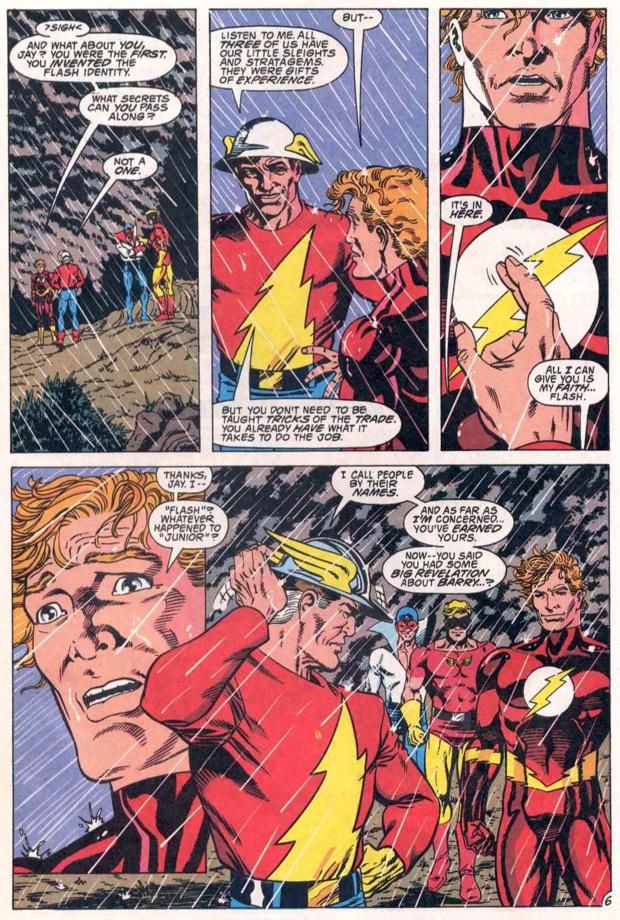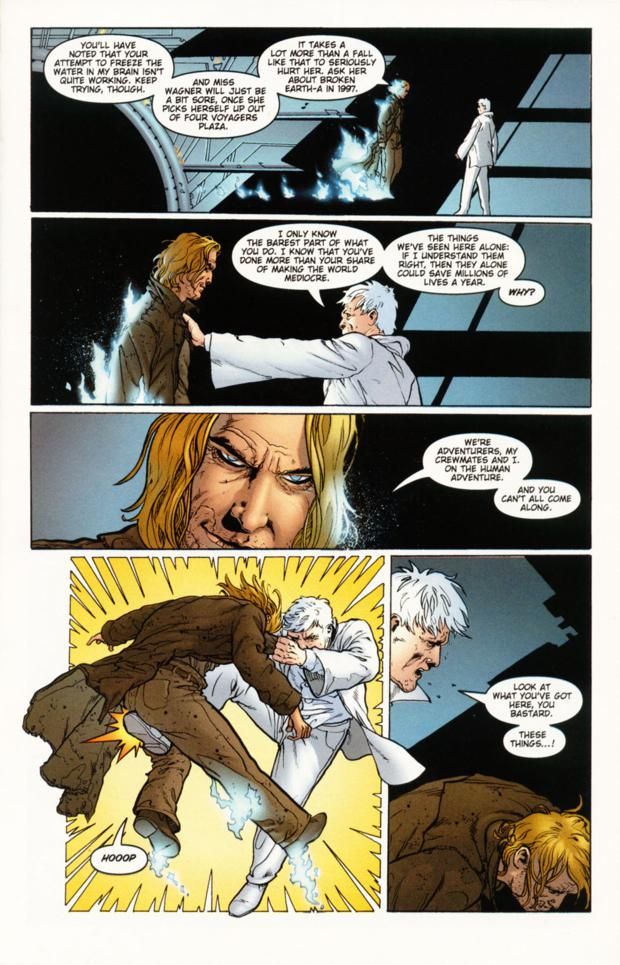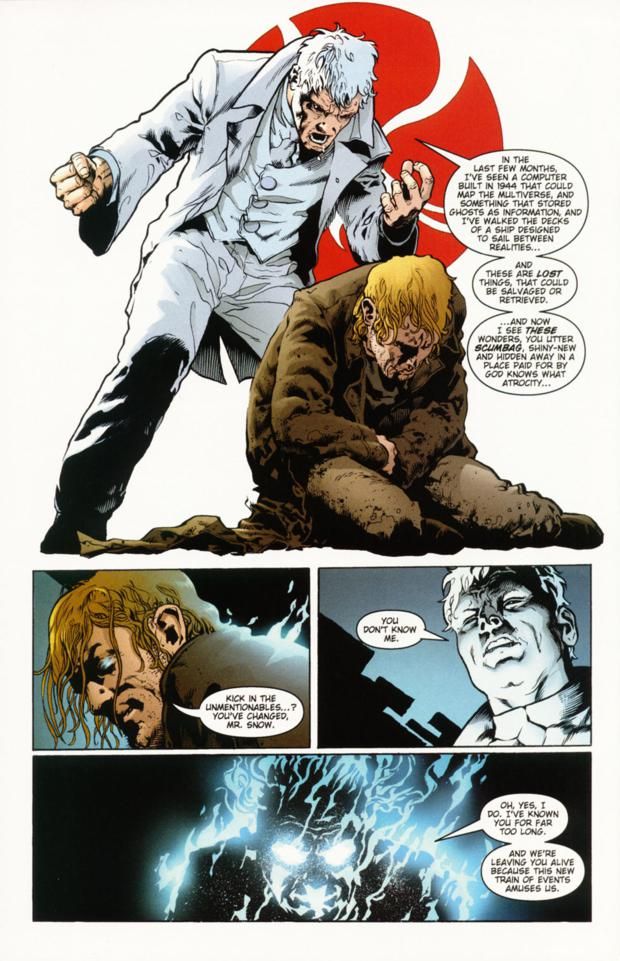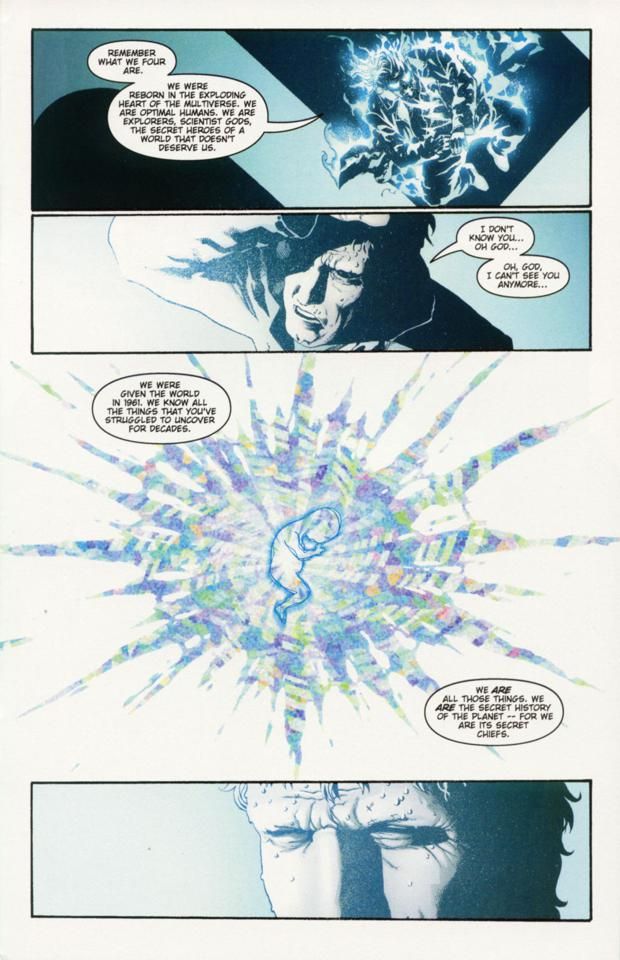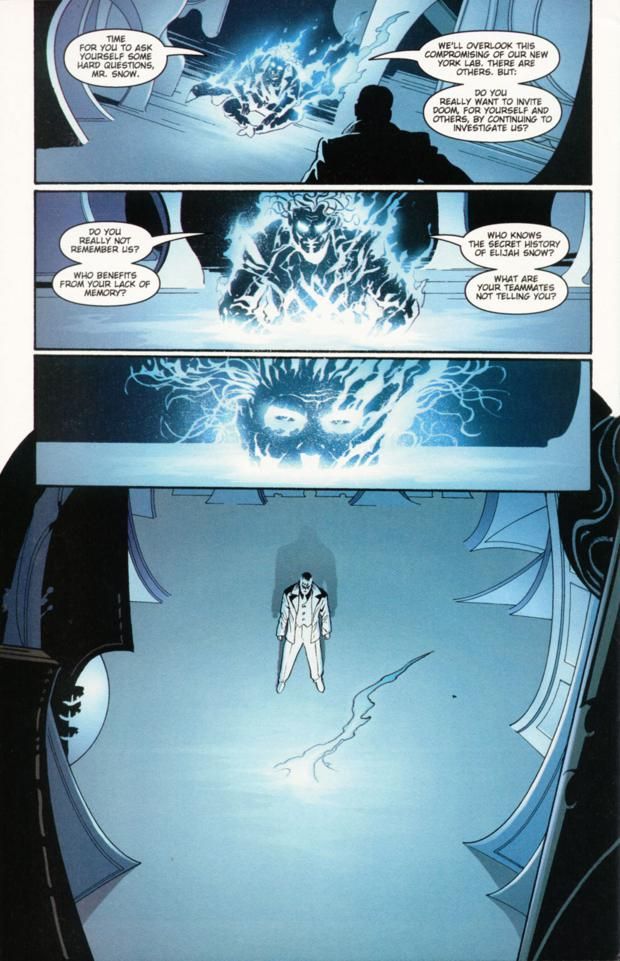Here are the next four writers that you voted as your favorites of all-time (out of roughly 1,040 ballots cast, with 10 points for first place votes, 9 points for second place votes, etc.).
NOTE: Don’t be a jerk about creators in the comments section. If you are not a fan of a particular creator, that’s fine, but be respectful about it. No insulting creators or otherwise being a jerk about creators. I’ll be deleting any comments like that and, depending on how jerky the comment was, banning commenters.
10. Geoff Johns – 1182 points (12 first place votes)
Geoff Johns' first major series was Stars and STRIPE, starring his own creation, Star Girl. Soon he began getting more and more work at DC, including an acclaimed run on Flash following Mark Waid's run. Eventually, Johns became one of DC's biggest writers, even writing their company-wide crossover, Infinite Crisis. He was then one of the four writers on 52.
Johns most notable character work for DC has been his work revitilzing older characters like Hawkman, Hal Jordan and Barry Allen. Johns memorably brought Hal Jordan back as Green Lantern, making Green Lantern one of DC's biggest titles.
One of his biggest innovations was the introduction of OTHER colored rings, which came to the forefront in the Sinestro Corps war.
This epic crossover brought to fruition a number of ideas first introduced during Green Lantern Rebirth (the storyline where Geoff Johns returned Hal Jordan to life and the Green Lantern Corps to existence). Sinestro had returned during that storyline and in this story, he returns to vex the Green Lanterns with his OWN Corps - the Sinestro Corps! The idea of a Corps of yellow-ring wielding villains (chosen because they possess the ability to instill great fear in others) was an amazing high concept and this storyline opened with perhaps one of the most over-the-top thrilling debut issue you'll see in superhero crossovers.
Kyle Rayner had temporarily been the host of "Ion," the entity that essentially powered the Green Lanterns. In the debut issue of the story, Sinestro not only removed Ion from Kyle, but substituted Parallax, the YELLOW entity (that Johns had introduced in Green Lantern Rebirth)...
What a stunning sequence. What a way to start a crossover! Soon, there were Red Lanterns, Purple Lanterns, Blue Lanterns and, finally, Black Lanterns. This was the inspiration for the major DC crossover, Blackest Night.
He then gave Barry Allen much of the same treatment, providing a new origin that is currently playing out on the Flash TV weries.
A few years ago, Johns was named DC's Chief Creative Officer. He helped launch the New 52 with a new take on the Justice League with Jim Lee and a new Green Lantern ongoing.
Johns recently wrote yet another crossover for DC, Forever Evil, giving him more crossover comics for one company than I believe any other comic book writer (perhaps Brian Michael Bendis?) He's clearly the driving creative force behind DC Comics.
9. Mark Waid - 1420 points (15 first place votes)
Mark Waid came on to the Flash with a strong opening arc that was literally Wally West: Year One. Waid then solidified one of the best parts of Bill Loebs' previous run, the relationship between Wally and Linda Park. And then, Waid did something REALLY clever...
In "The Return of Barry Allen," Wally's greatest dream turns into a nightmare as his uncle, Barry Allen, the Flash before Wally, returns to life. Only thing are not what they seem, and soon Wally is forced to collect a group of speedsters to confront Barry, who has returned...different. This storyline introduced Max Mercury to the title and really began the whole "Speed Force" idea that became such a major part of the title. In any event, while Wally gets help from the other speedsters, he soon learns that it ultimately comes down to him and his own fears of replacing his uncle to win the day. Waid planned it this way, to show that the only way for Wally to truly be accepted as a Flash by the fans is for Wally to accept HIMSELF as the Flash.
Epic.
Waid went on to write the Flash for roughly 100 issues, including a few more great epic tales. He had an excellent run on Captain America over at Marvel and wrote Kingdom Come for DC.
In recent years, Waid has been quite busy, writing an awesome stint on Daredevil (plus an upcoming stint on the SHIELD book) as well as his own creator-owned comics. He will also be relaunching Archie next year, which should be fascinating to see (Waid has done strong reboots in his career, including Superman Birthright, which ended up being used a lot by David Goyer in the making of Man of Steel and also the Legion TWICE, once after Zero Hour and once again roughly ten years later).
Go to the next page for #8-7...
8. Brian K. Vaughan – 1628 points (27 first place votes)
Brian K. Vaughan has had a particularly unusual career. Unlike most famous comic book writers, he's never had an extended run on a major pre-existing title. He's done an arc on Batman and some fill-ins for Wolverine very early in his career, but Vaughan's first major work was a new ongoing series for Vertigo starring Tefe Holland, the daughter of Swamp Thing. It didn't do that well, so no one was quite expecting him to suddenly practically save Vertigo in their post-Sandman, post-Preacher state.
The concept of 2002's Y the Last Man was simple - one day, all the men on Earth die. All the men, that is, except young amateur escape artist Yorick Brown and his monkey, Ampersand. They're the only two males alive on the entire planet, and, as you might imagine, hilarity ensues.
Seriously, though, Yorick (who is freaking out because he JUST proposed to his girlfriend, Beth, over the phone when the plague hit, and she's all the way in Australia!!) is tasked to first travel to find Dr. Allison Mann, a geneticist who needs to study Yorick to discover what happened and if they could reverse it. Along with Yorick on his journey is this government agent, Agent 355, who serves as Yorick's bodyguard. Once they find Dr. Mann, the four (counting Ampersand) travel the country and the world in their mission to save the planet from dying out.
The relationship between these four characters (mainly the three human ones) forms the main focus of the series. So I'll show you a few sample pages to get the dynamic they shared on their trip across the United States. Along the way, they (and we, the reader) find out how the world has been coping with the loss of all the world's men. It's fascinating and touching stuff.
Right after Y the Last Man launched (and before it became TOO much of a sensation), Marvel brought him in for the launch of a short-lived line of comics called Tsunami. Titles included a Human Torch comic as well as two comics by Vaughan. One was a Mystique ongoing series that lasted a year. The other one was a series with artist Adrian Alphona called Runaways.
The concept of Runaways was a clever one - a group of teens (and one pre-teen) meet each other every year when their parents have some sort of meeting. When they decide to snoop around, they discover the unthinkable - their parents are supervillains!!! With this knowledge in mind, the kids decide to (wait for it..) run away, each taking something with them from their parents, whether it be Nico Minoru (Sister Grimm)'s magical powers, Karolina Dean (Lucy in the Sky)'s alien abilities, Gertrude Yorkes (Arsenic)'s pet dinosaur, Chase Stein (Talkback)'s gadgets, Molly Hayes (Bruiser/Princess Powerful)'s mutant strength or Alex Wilder's cunning and tactical abilities.
On the run, they try to both foil their parents' schemes while also trying to do some good.
While working on Y the Last Man, Vaughan then launched ANOTHER new series, this time it was called Ex Machina and it was Vaughan's take on what a superhero in the real world would appear like, as well as what would happen if a former superhero became Mayor of New York. In doing so, Vaughan gets to make points about superheroes AND politics (as opposed to politics and poker) while being ably assisted by Tony Harris' realistic artwork.
Mitchell Hundred was a civil engineer who gained superpowers by a mysterious seemingly alien object. He now has the ability to communicate with mechanical devices. He became the world's first superhero but after a short career he retired and ran for Mayor as an independent. His candidacy was going nowhere until he came out of retirement to save one of the Twin Towers during 9/11. Now a world famous celebrity, he is easily elected Mayor of New York.
The series follows his term in office, although there are tons of flashbacks. Vaughan expertly uses time jumping to inform his stories. The cast of the book is a fascinating one, from Deputy Mayor Wylie to Hundred's two closest friends, Bradbury - his head of security and Kremlin - a family friend of Hundred's since childhood that helped him become a superhero in the first place who is none too thrilled at Hundred giving up superheroics to be a politician. That is just a sampling of the many cool characters who make up Hundred's staff.
Most recently, after taking a break from comics, Vaughan launched the hit comic series Saga for Image, about (almost literally) star-crossed lovers who run off together and have a kid, contrary to what all of their family and all of their people want from them.
Here's the opening to the series, which I think encapsulates what Vaughan (and his talented artistic partner, Fiona Staples), is going for with the tone of the series...
If Brian K. Vaughan is writing a book, you know the odds are very good that the book is one of the best books on the market.
7. Warren Ellis - 1649 points (29 first place votes)
Warren Ellis had worked for some small comic book houses in the early 1990s, with the most notable result being his great Lazarus Churchyard series. After a few years, Ellis began working at Marvel, with a notable run on Hellstrom and Doom 2099. His longest run at this time, though, was on Excalibur, where he introduced the world to Peter Wisdom.
After working on a number of projects for Marvel during the mid-90s (including a memorable Thor storyline), Ellis began his longest-running project yet (issue-wise), with his creator-owned series Transmetropolitan, with artist Darick Robertson, about the journalist Spider Jerusalem.
Ellis had already been working for Wildstorm (notably on DV8), but he took his work to a whole new level when he took over Stormwatch (Stormwatch actually predated Transmetropolitan). That series led to two of the great comic book series of the late 1990s and 2000s, the Authority and Planetary (Planetary was not tied into Stormwatch, it just launched the same time as Authority).
Planetary was about a group of (this is what is on the cover of the first issue) "archaeologists of the impossible."
Essentially, Planetary explores unexplained phenomena and, if there is any practical use to mankind out of said phenomena, they extract it. The Planetary team consists of the super-strong Jakita Wagner, the "plugged-in" Drummer and the century-old Elijah Snow. The team is funded by the mysterious "Fourth Man." The first "season" of Planetary ended with the discovery of just WHO the Fourth Man is and how that revelation changes the game plan of the title for the rest of the series. Each issue of Planetary explored the concept of "what if all popular culture characters existed, in some form or another, in the Wildstorm Universe?" So each issue, Ellis and Cassaday examined a different notable pop culture figure, almost always with analogues for the characters who are not yet in the public domain (Doc Brass, for instance, instead of Doc Savage).
As the series went by, we learned that there is a group out there with an entirely different focus than the Planetary folks - this group, known as The Four (based on the Fantastic Four, naturally), wants all of the "super-science" of the world to themselves - they don't want the rest of the world to have any access to these wonders. That, and the identity of the Fourth Man, were the key points of plot development over the first 12 issues of Planetary.
Here we see Elijah Snow in battle with a member of The Four...
The revelation of WHO the Fourth Man was excellent.
In recent years, Ellis has alternated between creator-owned work for Wildstorm (and then later, Avatar Press) plus short runs for Marvel Comics, including the brilliant Nextwave (with Stuart Immonen), Thunderbolts (with Mike Deodato), Secret Avengers (with a number of artists) and most recently, a great opening six-issue arc on Moon Knight.


